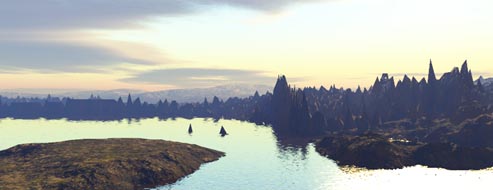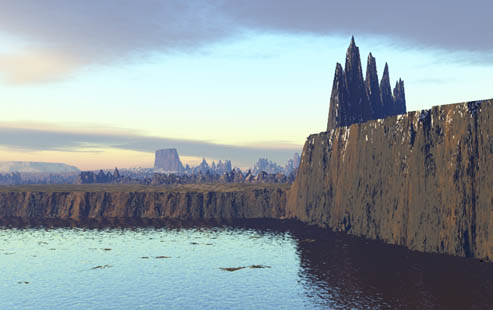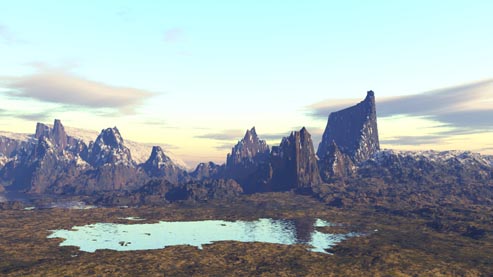|
Tamhia The Ruins of Tamhia / Bur-Tiisoyn Once it was the blooming metropolis of the middle north. Today the former Tamhia only consists of relics which can be found south of the lennay Tiba. |
 |
|
Neither was it a war that destroyed Tamhia, nor was it a desease or the pollution of the environment which was responsible for the decline of the lenntay. It was the ayganyayan population itself. At the beginning of the first recorded armed conflict in 2851, Tamhia was a dying lenntay already. A strong and inevitable migration tendency made the population of Tamhia die out literally. But what was the reason for this development? Briefly, we can say that Tamhia died of its own way of life. Economic growth and its fortunate situation between Laania, Tahain and the north of Tekkay had made Tamhia an important center of trade at the end of the Ron-Age. Additionally, Tamhia was close to the wide Miooro stream. |
 |
|
So all the administration, the cultural business, the religious activities and the economical structures were attuned to the philosophy of the Didakhin and they worked very well withing these strictly organized limits. However, when the influence and the power of the Didakhin faded and Tahain, which was now called Sirk, was awarded But-Tensayth when it was founded in 2814, Tamhia culturally became the odd one out. When finally Tiba became the second seat of the double monarchy government besides Murh in 2829, the migration process in Tamhia was already in full activity. Here you can find Tamhia / Tiba on a map. |
 |
